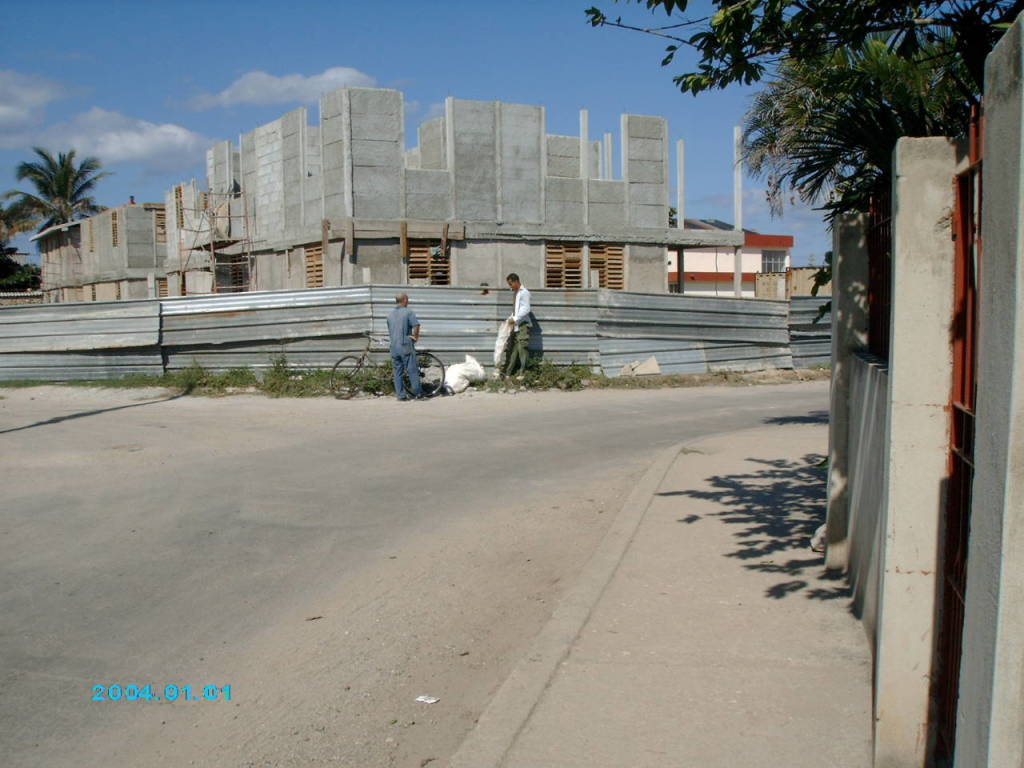The Other Pandemic (Part III)
Veronica Fernandez

At the beginning of this year, a construction brigade from the Ministry of Construction, along with the Housing Institute, decided to develop a piece of land behind my house. They intended to build new housing for people who have lived in shelters for some time – people whose houses were destroyed or severely damaged by the string of hurricanes that hammered Cuba in 2007 and 2008.
More specifically, these people were residents of the Old Havana and Centro Havana municipalities in the Cuban capital. Those neighborhoods, generally, have always been the hardest hit because of the poor condition of their housing stock, given their age and the lack of resources available for their repair and maintenance.
My community of Cojimar, located to the east of Havana Bay, is characterized as having few apartment buildings, because the majority of properties in this suburb are single-family homes. Though the idea of building apartment buildings here was not very well received by a great part of its residents, it’s necessary to recognize that we urgently need to use these empty spaces to begin satisfying the tremendous housing demand that now exists in the country.
The idea is excellent and quite reasonable for the residents who would “coexist,” so to speak, with these builders. What was not excellent is the waste and theft of building materials. Some neighbors had already informed me of this, but I wanted to witness it with my own eyes, and I soon had the luck to confirm it.
A few days ago, I heard this huge racket while coming home from work; the neighborhood was up in arms. An enormous concrete truck had come in, and after pouring the material needed for construction, the driver dumped what was left in the middle of the street – blocking traffic. But what’s more, this driver was pouring that material directly in front of my house and my side neighbor’s.
I immediately rushed inside my house to look for my camera to take a picture of the truck, but when I came out the driver and his crew were already beating a hasty retreat. However, I was able to memorize his license plate: HUB 385.
We promptly reported this and asked to speak with the construction chief, who -as typically occurs- justified everything. He said all that he could do was send his men to shovel up the concrete mess they had dumped.
Soon after this fateful event, I was able to take photos of two people stealing construction materials, something that takes place on any day and at any hour. I also took a picture of the condition in which the street was left after the dumping and “cleanup” of the concrete.
My neighbors, as well as myself, wonder how long these kinds of things will continue happening. Is there anyone who can put a limit to this waste and theft of materials? Are the supervisors obligated to respond to this? Can’t they control it? Aren’t they required to by their superiors? – or is it that their superiors are also involved in these dealings?
These and many more questions came to my mind, but the answers are unsatisfying.
How many people are in need of the few materials available to repair their homes, yet -notwithstanding- we see builders dumping out materials. How many people need such material but don’t they have the money to pay the overpriced charges for it? How long will we tolerate what’s happening?
Now I’m beginning to understand why many people don’t want these construction crews near where they live. Numbers of people have told me that they don’t care if the builders sell the materials or not; what interests them is that the crews respect other people’s property, the place where they’re working, because they are doing it within a community where people live.
Who really cares about all this? There’s a Cuban proverb that goes: “This isn’t mine, it’s liborio’s (the State’s).” And since it’s liborio’s, anyone one can do with it as they please. Every day I think back more to my journalist cousin who commented years ago, “There’s no one who can fix this.”






This situation is typical of socialist regimes in which the state demand responsibility by no one is accountable for anything. Mistakes on tops of mistakes from the regime leaders for fifty years had make this kind of attitude norm in Cuba. This thing happens because the driver, the boss of the driver and the boss of the boss of the driver is not going to pay for anything as long as he keeps his pledge to the Communist Party.